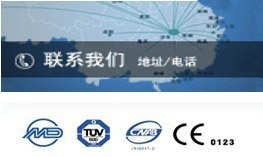| Radiology Room |
| Ultrasound Room |
| Surgery Room |
| Laboratory Room |
| Comprehensive Room |
| Pediatrics Room |
| Dental Room |
| Medical operation instruments |
| Hospital Furniture |
| Medical supplies |
News Center
New Device Uses Magnets to Capture Disease-Fighting T Cells and Make Them Glow
CAR T cell immunotherapy has transformed cancer treatment by engineering a patient’s own immune cells to target and destroy cancer, particularly in blood cancers like leukemia and lymphoma. Yet, the therapy remains limited by high costs and complex procedures, especially the labor-intensive process of harvesting T cells, which requires expensive equipment and specialized facilities. To make this life-saving therapy more accessible and affordable, researchers are developing a new device that could simplify and reduce the cost of harvesting T cells.
Researchers at Case Western Reserve University (CWRU, Cleveland, OH, USA) are developing a device, called CAPGLO—short for “capture and glow”—as a compact, low-cost tool to harvest T cells more efficiently. The developers include researchers from CWRU’s biomedical engineering and cancer biology programs, building on their previous work creating a malaria diagnostic device that used magnetic fields to detect iron-rich crystals in infected blood. That earlier project laid the foundation for CAPGLO, which applies a similar magnetic approach for a much more complex application: isolating specific immune cells from blood samples. CAPGLO works by coating tiny magnetic beads with a special protein that selectively binds to T cells. When mixed with a patient’s blood, these beads attach to the surface of the T cells. A magnetic field is then applied to extract the bead-bound T cells, separating them from red blood cells and plasma. These T cells can be collected in a small tube. In the final step, researchers plan to safely detach the beads, leaving behind intact T cells that are ready for the CAR engineering process.
The procedure is designed to work with just a half-pint of blood—the typical volume taken during a standard blood donation—and aims to complete the process in under an hour to minimize cell damage. The goal of the CAPGLO project is to replace the current method of leukapheresis, a costly and complex process involving specialized centrifuges that remove and return large volumes of blood while isolating immune cells. These existing systems cost hundreds of thousands of dollars and are generally only found at major cancer centers. CAPGLO offers a low-cost, portable alternative that could enable more widespread access to CAR T cell therapy by simplifying the first and most critical step—T cell collection. If successful, CAPGLO could help bring immunotherapy into more clinical settings, possibly allowing CAR T cell treatments to become a first-line option rather than a last resort. The simplified process could shorten production timelines and expand availability to patients who otherwise might not have access due to infrastructure or cost limitations.
“I hope that we could bring the cost of immunotherapy down so it could be first-line therapy rather than end-stage treatment,” said Susann Brady-Kalnay, a cell biologist. “For some people, this is a curative therapy. For others it offers significant survival benefits. We need to make it more accessible to everyone.”
http://www.gzjiayumed.com/en/index.asp






